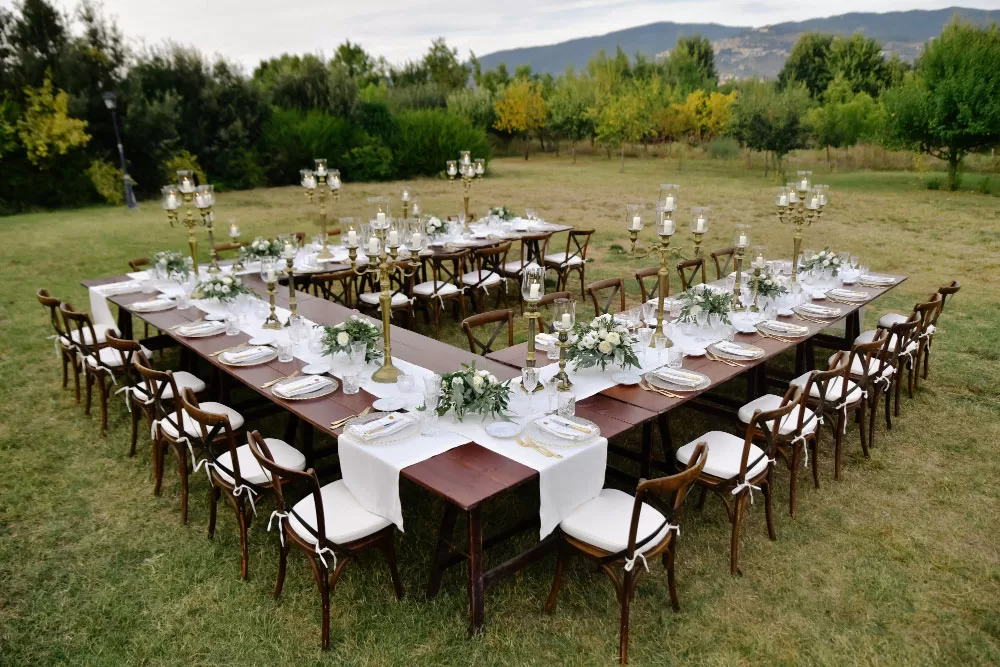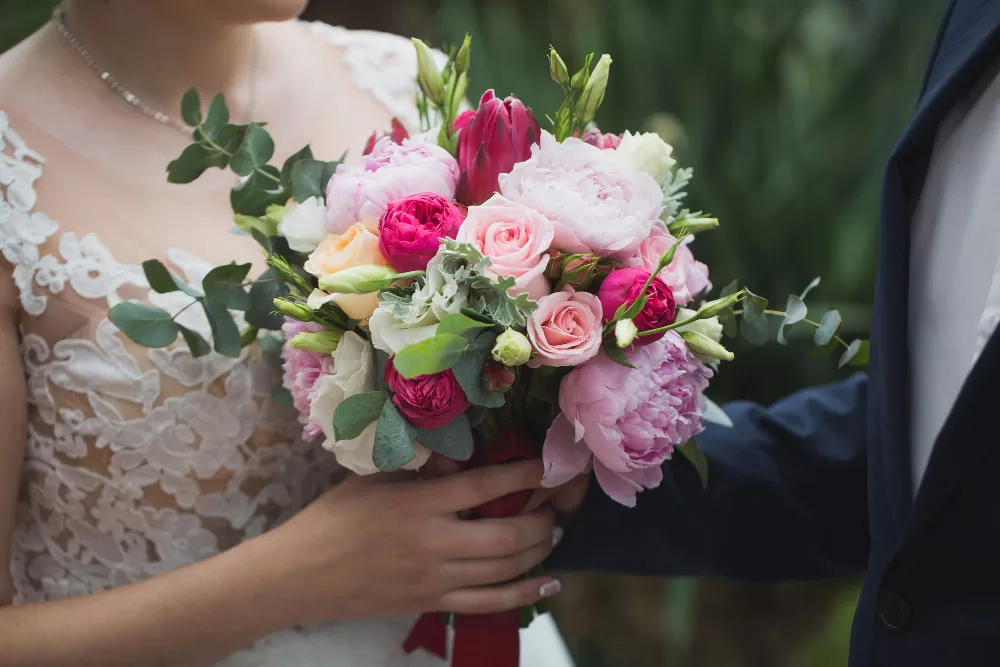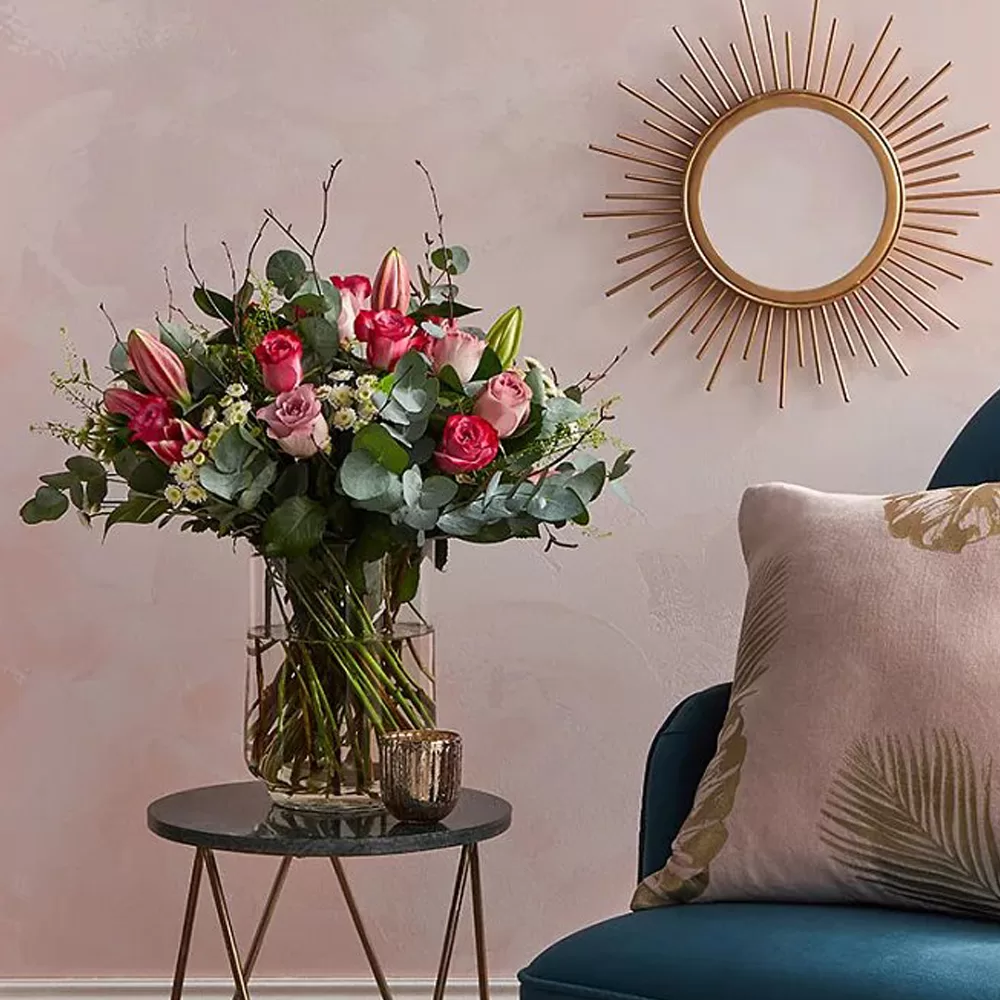Table of Contents
ToggleRed Flowers: The Language of Love and Passion
Few colors speak the universal language of love like red. Red flowers, especially roses, have long been associated with romantic love, deep desire, and admiration. A red bouquet is bold and unforgettable, often gifted on Valentine’s Day or anniversaries to express heartfelt emotion.
But red is also a color of courage and respect, making red flowers a suitable tribute to honour achievements or milestones.
Popular red flowers: Roses, tulips, carnations, dahlias, poppies.
Pink Flowers: Femininity, Happiness, and Affection
Soft and gentle, pink flowers whisper of love, sweetness, and femininity. They’re perfect for expressing feelings that are warm and genuine but not necessarily romantic. Pink blooms convey a sweet sentiment—like saying “thank you” or “I care about you.”
Different shades of pink can express different moods: light pink flowers suggest grace and gentleness, while deeper shades can indicate affection and appreciation.
Popular pink flowers: Peonies, cherry blossoms, carnations, lilies, roses.
White Flowers: Purity, Innocence, and New Beginnings
White flowers carry a sense of serenity and simplicity. They symbolize purity, innocence, and humility, making them a frequent choice for weddings, baptisms, and memorial services. Their clean look also produces peace and spirituality.
In weddings, white flowers represent new beginnings and everlasting love. In funerals, they offer a message of remembrance and hope.
Popular white flowers: Lilies, orchids, roses, daisies, hydrangeas.
Yellow Flowers: Friendship, Joy, and Happiness
Bright and cheerful, yellow flowers are sunshine in floral form. They represent friendship, happiness, and positivity. Unlike red flowers, which lean into romantic territory, yellow flowers are perfect for platonic relationships and uplifting gestures.
Yellow roses, in particular, are known to symbolize love, appreciation, and heartfelt gratitude towards close friends and family. Likewise, sunflowers in vibrant yellow tones represent admiration, loyalty, and deep friendship. Their natural tendency to turn toward the sun reflects positivity and shares happiness.
Popular yellow flowers: Sunflowers, daisies, tulips, marigolds, chrysanthemums.
Orange Flowers: Enthusiasm, Energy, and Adventure
Vibrant and eye-catching, orange flowers are for the bold-hearted. They symbolize energy, enthusiasm, and excitement, often given to celebrate achievements, spark motivation, or show admiration for someone’s bold personality.
Orange blooms make a unique statement and can even ignite feelings of desire and attraction, especially when paired with red.
Popular orange flowers: Gerberas, lilies, marigolds, zinnias, tulips.
Purple Flowers: Royalty, Dignity, Wisdom
Purple has long been linked with royalty, luxury, and wisdom. Flowers of this shade are often used to express dignity, success, and admiration, making them a sophisticated and graceful choice for formal settings or thoughtful gifts.
Lighter purples like lavender carry more delicate meanings, such as grace and feminine charm, while deeper purples exude mystery and admiration.
Popular purple flowers: Lavender, irises, orchids, lilacs, bellflowers.
Blue Flowers: Calm, Trust, and Loyalty
Blue flowers offer a relaxing, soothing presence. They symbolize peace, serenity, and honesty, making them perfect for moments of reflection or support. Blue is not a common flower color, so when seen, it feels rare and poetic.
These blooms also represent confidence and commitment, which makes them a heartfelt choice for long-time friends or partners.
Popular blue flowers: Hydrangeas, delphiniums, cornflowers, morning glories.
Multicolored Bouquets: A Mix of Emotions and Messages
When you combine flower colors, their meanings can blend to form more complex messages. For example:
- A red and yellow bouquet can suggest celebration and romantic joy.
- Pink and white may symbolize gentle love and purity.
- A rainbow of colors brings a message of inclusivity, positivity, and emotional richness.
Understanding the meanings behind each color can help you curate a bouquet that tells a finer and thoughtful story.
Why Flower Color Symbolism Matters
Flowers provide a real, meaningful expression of what words sometimes can’t say. If it’s a declaration of love, a gesture of sympathy, or a celebration of friendship, the colors you choose matter. When gifting or decorating, considering flower symbolism adds intentionality and depth. It turns a simple arrangement into a heartfelt message, one that the recipient can feel, even if they don’t know every color’s meaning. So the next time you pick out a bouquet, think not just of beauty, but of the story behind each shade.
To summarize, flowers don’t just brighten spaces; they brighten lives. Their colors speak to our hearts and emotions in ways both subtle and striking. By learning the symbolism behind these shades, we gain the power to communicate with care, creativity, and clarity.
If you’re gifting, decorating, or simply appreciating nature’s beauty, let color be your guide and your message.






